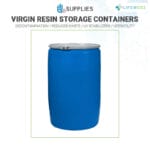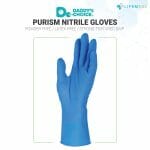What are Contamination Detection Kits?
Contamination detection kits are specialized tools and equipment designed to identify and measure the presence of harmful contaminants in various environments. These kits are used to detect biological, chemical, or particulate contamination in workplaces such as laboratories, manufacturing facilities, healthcare settings, food processing plants, and cleanrooms. Contamination detection kits are essential for ensuring that work environments remain free from harmful agents that could compromise product quality, worker safety, or the integrity of sensitive processes.
These kits typically include sampling tools, chemical indicators, swabs, or other instruments that allow users to collect samples and test for contaminants. Depending on the industry, contamination detection kits can be tailored to detect specific substances such as pathogens, hazardous chemicals, dust, or microbial growth.
Importance of Contamination Detection Kits in the Enterprise Environment
In industries where cleanliness, sterility, and safety are critical, contamination detection kits play a crucial role in maintaining a controlled environment. For example, in pharmaceutical manufacturing, even minute levels of contamination can render a product unsafe for use. Similarly, in cleanroom environments, where semiconductor components are produced, detecting airborne particles is essential for preventing product defects.
The use of contamination detection kits is critical for regulatory compliance, as industries must adhere to strict standards such as Good Manufacturing Practice (GMP) or ISO guidelines. Failure to detect and mitigate contamination risks can lead to product recalls, legal penalties, and reputational damage. Therefore, contamination detection kits are a key part of quality control and workplace safety procedures, helping enterprises meet regulatory requirements and avoid costly disruptions.
Types of Contamination Detection Kits
1. Biological Contamination Kits
- Purpose: Detects pathogens such as bacteria, viruses, or fungi that can contaminate environments in healthcare or food processing industries.
2. Chemical Contamination Kits
- Purpose: Used to identify hazardous chemical residues or toxic substances in industrial settings, chemical plants, or laboratories.
3. Particle Detection Kits
- Purpose: Designed to detect dust or particulate matter in cleanrooms or high-precision manufacturing environments.
Managing Contamination Detection Kits with Enterprise Software
Enterprise software helps businesses streamline the management of contamination detection kits by automating processes such as inventory tracking, calibration, and compliance monitoring. Key benefits include:
- Inventory Management: Track the availability and use of contamination detection kits across different departments or facilities, ensuring they are always accessible when needed.
- Calibration Scheduling: Automate calibration schedules to ensure the accuracy and reliability of detection equipment.
- Compliance Monitoring: Ensure that detection kits meet regulatory standards, helping businesses remain compliant with industry safety and quality regulations.
Conclusion
Contamination detection kits are essential for maintaining cleanliness and safety in industries where product integrity and regulatory compliance are critical. These kits help enterprises detect harmful contaminants early, protecting both employees and end products. By utilizing enterprise software to manage contamination detection kits, businesses can optimize inventory, ensure accurate testing, and maintain compliance, ultimately leading to safer and more efficient operations.
« Back to Glossary Index

















